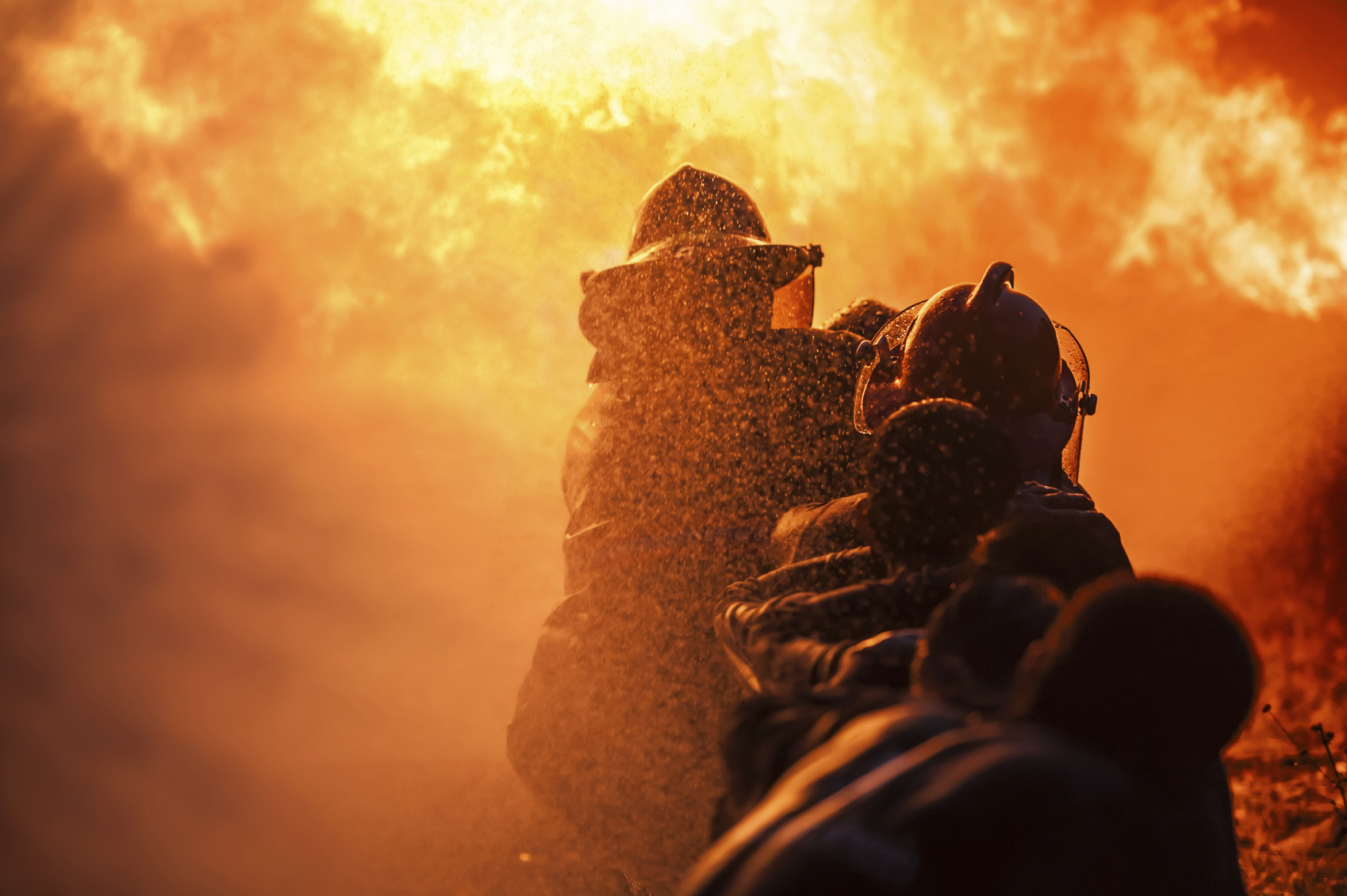
As your clients are aware, it is the responsibility of the management team to effectively lead and direct their firefighting crews. As a team is often bound and judged by their ability to fight internally aggressive building fires, there are a few different strategies that are often debated. While there is a place and time for each strategy, it’s important to understand which one to enforce to keep your team safe and reduce Volunteer Firefighter Management Liability. Let us take a closer look at the aggressive firefighting techniques.
Direct attack.
According to Fire Engineering, the direct method of attack is simply applying water to the base of the burning material, at the flame/fuel interface, where the flammable vapors being distilled by heat from solid material ignite and burn. Further, the direct method of attack causes little disruption of the heated combustion products; reducing heat production by extinguishing the fire at its base stops the burning process at its source, in turn stopping the upward liberation of more heat, smoke, and gases. This is achieved by applying a straight stream of water directly to the base, penetrating the most heat possible.
Indirect attack.
In addition to remote injection of the water fog, there are two other requirements for success when using the indirect method- First, the ceiling temperature within the fire compartment must be at least 1,000° F to ensure ready and efficient conversion of the fog spray to steam, says the article. This method is preferred when the windows and doors of the building are still intact and if it is not ventilated.
Combination attack.
Primarily used for the exterior application of water, the objective of the combination attack is to ‘roll’ the stream around the perimeter of the room, cooling the walls, ceiling, and floor with the outer edge of the stream while the inner portion of the stream cools the hot gases being produced by the fire; striking the heated ceiling, walls, and fuel materials produces the maximum amount of steam within the shortest period of time, says Fire Engineering. However, in using these strategies to externally fight fires, management teams must be cautious so as not to push the fire through unaffected areas.
As management teams are liable for their decisions and their firefighting team, they must be fully informed about the proper firefighting techniques that will put out the fire while simultaneously protecting their crew to the best of their ability.
At Provident Fire Plus, we offer custom tailored packages to best protect firefighters. We understand the risks that emergency response teams are subjected to on a daily basis, and have worked to serve these dedicated professionals for over 87 years. For more information about our products and policies, we invite you to contact our experts today at (855) 201-8880.

